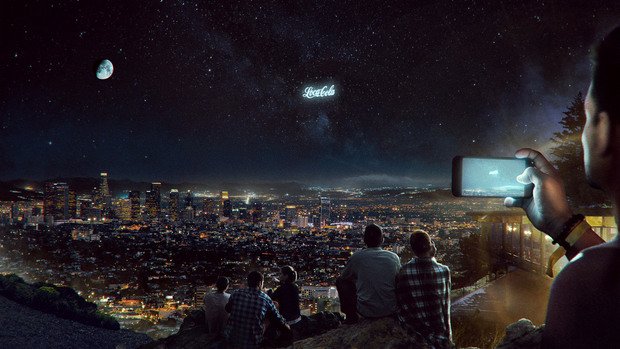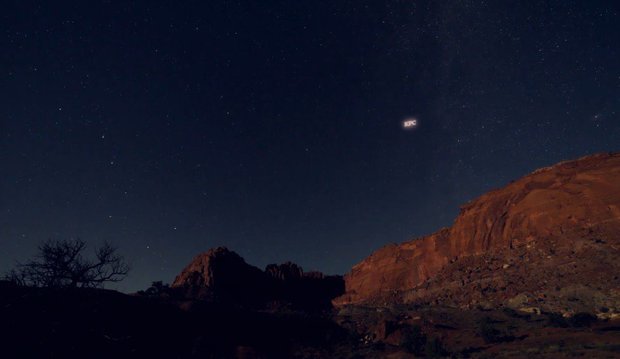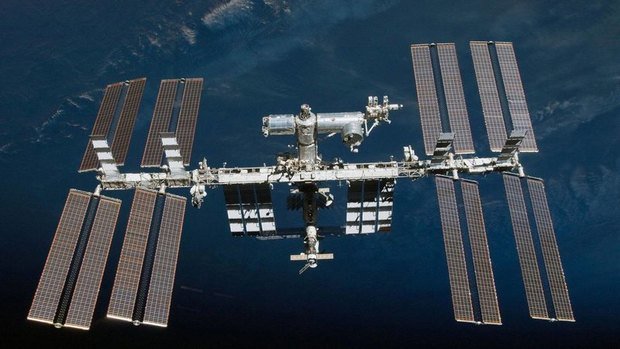Vlad Sitnikov, author of 'sky display' idea: ''In fact, we are engaged in the development of entertainment in space''
The founder of Start Rocket start-up and The Orbital Display project tells about space exploration, multi-million dollar investments and criticism
The Russian startup Start Rocket has seriously considered to launch a giant display in the sky, which has created a stir abroad. The project assumes that a flock of satellites will show a certain picture within 6 minutes at dawn and at sunset. The founder of the startup and author of The Orbital Display project Vladilen Sitnikov in the interview with Realnoe Vremya responded to criticism of the defenders of dark sky, spoke about the legal aspects of the innovation and explained why the display is incorrect to call a billboard in space.
About the idea of space display and technical aspects
Vlad, could you tell us briefly about your project?
Our project began with the hypothesis — whether it is possible to bring into space an object that, reflecting sunlight, could create images in the starry sky clearly visible from the Earth. Working on this interesting task, we considered many possible solutions and eventually decided on the most effective and viable — to orbit a controlled formation of CubeSats in the format of a display. Each CubeSat is a satellite equipped with engines, solar panels, communications and opening reflector. Each CubeSat is a pixel in the structure of the display.
Can the display be seen in the daytime and at night?
During the day, of course, it will be almost invisible, so it will be either at sunset or at dawn. Our task is to be active at a time when the streets are crowded at the most.
How many minutes will the display be visible?
Six minutes per session.
In one session will it be possible to show several advertisements?
No, it is not. We can only change the ''picture'' three times a day. This depends on the solar energy from which the charge is used to operate the reflector. The energy is enough for three actions a day.

''Our project began with the hypothesis — whether it is possible to bring into space an object that, reflecting sunlight, could create in the starry sky images that are clearly visible from the Earth.'' Photo: provided by StartRocket
At what stage is the project, with whom are you cooperating?
We have passed the stage of scientific justification to understand that all this is feasible. We did it with the Skoltech space centre. They turned out to be the most expeditious, the most interested. Now we need to move towards the testing stage. We want to test it on the stratospheric balls in the spring, to launch in the stratosphere at about 40 km from the Earth's surface two balls and confirm the idea of pixels.
At the same time, we are looking for investments to carry out the first stage – it is actually completely engineering development, preparation of all technical documentation and study of the important problem such as the management of a large formation in Earth orbit, which has not yet been solved by anyone. The composition of the formation of 200 to 300 satellites, built in close conjunction with each other, in a single movement — it requires solving a scientific problem. Also at this stage, we conduct an orbital test, confirming the operation of all systems.
The task of the next stage is to launch own production to create CubeSats, because it is necessary to update the group annually, and to negotiate with aerospace agencies for launching into outer space. Nothing bothers us here, because we can use any rocket. CubeSat is very small, it weighs a maximum of 20 kg, and we can use the available free resources of launching rockets, even Chinese or Indian, or private agencies'.
I read that the launch of CubeSats in space is possible in 2021 if funding is available. That is, this period includes the construction of a plant for the production of satellites?
That's right. As soon as there is funding, it takes 2 years to launch the formation into orbit. Including the launch of the production site.
How long did it take to develop the scientific part of the project?
Almost all summer, we finished in September. The solution was found quickly.
About the price tag for placement and use cases
When the idea was born? Why did you decide to launch a display into space?
The idea was born at a time when the American company Rocket Lab launched the ''disco ball'' in January 2018. It turned out that you can take risks, go beyond the ''visible'' and make a real revolution in space; launch a new industry — the entertainment industry in space. There is science in orbit, soon there will be travelling, but there is no industry for which humanity lives and suffers.
It was necessary to quickly calculate the possibility of displaying an object that could serve as a carrier of an image or message visible from the surface of the planet. My mentor Ivan Burgin, who deals with the ballistics of GLONASS group, made a rough calculation of this project from the point of view of physics and technology. The answer was simple — it is possible. Available rocket carriers can launch an object with a certain weight. I realized that we can go further, and then announced a competition. The result was a proposal to Skoltech of the idea with the formation of CubeSats.
How much is the placement on your orbital display going to cost?
We plan that the first year of the formation during all day over the Earth will cost 600 thousand dollars, but since we change the message three times a day, 8 hours above the planet will cost 200 thousand. Costs reduction will lead to that in the next year the whole day will cost three times less.
What investments does your project require?
At the first stage with the test in orbit we need 12 million dollars, at the second — 208 million. Since the first launch is always complex and involves a lot of risks, we expect to reduce the cost of creating and launching the group to $80 million in the future.

''We plan that the first year of the formation during all day over the Earth will cost 600 thousand dollars, but since we change the message three times a day, 8 hours above the planet will cost 200 thousand.'' Photo: blogs.discovermagazine.com
What can be displayed in the sky with CubeSats? As far as I understand, they can be used not only to advertise commercial projects.
We declare that our project is not an advertising billboard. Of course, the most accessible explanation of how this new media format can be used is advertising. We create the largest display in the world, and we create it in orbit. In fact, we are engaged in the development of entertainment in space. There is a scientific space, there is a telecommunications space, there is a cartographic space. Richard Branson and Jeff Bezos are making space for travelling. But there is no entertainment, and there are a lot of events that can be supported from space — the Olympics, the World Cup and so on.
We also provide an opportunity to use the display to all governments of the world in case of emergencies and disasters. Remember in Moscow there was a blackout? It would be possible to highlight the message in the sky: ''Remain calm, everything will be restored by a certain time.'' Or to light up the de-energized territories. Also the areas covered by forest fires are also relevant. The main thing: the technology allows to convey the message to the masses with the lack of access to the usual information tools.

''The technology makes it possible to convey the message to the masses amid the lack of access to usual information means.'' Photo: merca20.com
On legal aspects and criticism
How will the work of the display be regulated from a legal point of view?
There was a ban of NASA on advertising in the International Space Station in their own compartments and on the surfaces, but the problem has been been decided by themselves — now they have started to advertise themselves. Roscosmos has always sold placements for advertisements and special projects. There is no global ban.
At the moment, there is no regulation of communications in the orbital space from humanity. Theoretically, we can be over China, Fiji or Australia. It is unlikely that everyone can unite to regulate the space.
In addition to the legal aspects, there are also defenders of the starry sky, who actively criticize your idea.
Certainly. There will always be people who deny the development of society. Remember, there were the Luddites? They destroyed the machines because they were deprived of their work. We're all fighting for clean ocean, but the garbage island in the Pacific keeps growing. They complain that we clog up the orbit — but no, we destroy everything that we take. They complain that our satellites will interfere with the observations of astronomers, but no, it takes 6 minutes for us to fly through the sky, quickly and with minimal probability to be in the moment and in the area of the observed area.
We will not be above, for example, national parks — someone is afraid of this – just because there are no people there. After all, we are a commercial organization and we need potential viewers, and there are few of them outside large cities.
Aren't you afraid of space debris?
Yes, there is a lot of garbage, but chances of collision with it even the current objects which there are, are minimum. In my opinion, in the entire history of mankind's use of space and orbits, there have been not so many collisions with debris. Most of the objects larger than 10 centimetres are registered and under observation. If necessary, even the international space station sometimes changes orbit to avoid a collision. So far, there are no special threats of collision, but of course, no one denies such a possibility. Next to the display there will be 20 sleeping satellites that we will use in the event of failure of active CubeSats.
CubeSats will be monitored from the Earth. Aren't you afraid of hackers who can hack into the system and write, for example, a bad thing in the sky?
Nothing ventured, nothing gained. You can be afraid, but you can protect yourself so that it was very difficult to hack. After all, the domestic Operations Control Centre is not afraid that the attacker can take control of the ISS.

''You can be afraid, but you can protect yourself so that it was very difficult to hack. After all, the domestic Operations Control Centre is not afraid that the attacker can take control of the ISS.'' Photo: popmech.ruI think everything is changing in the last year due to the fact that the same Mask, Branson and Bezos show that private space is achievable. Maybe such projects were just launched at the wrong time. But now I think it's time for them.